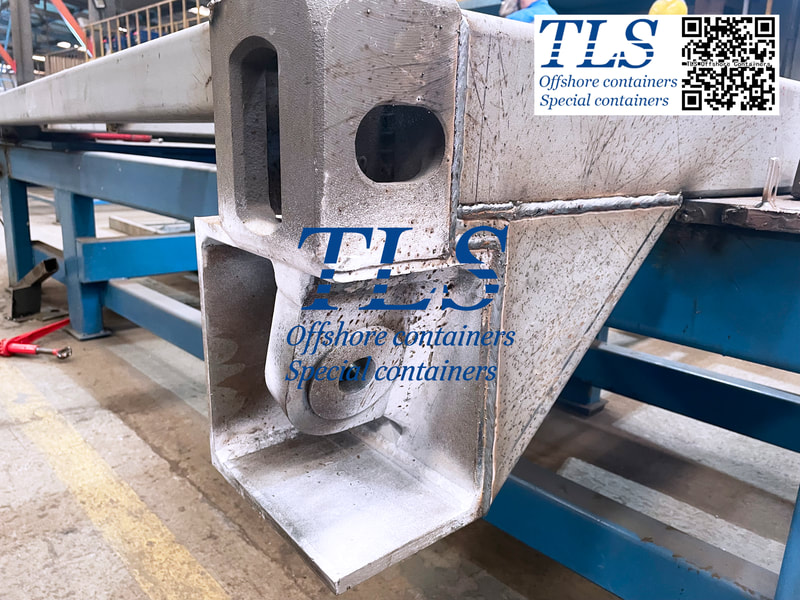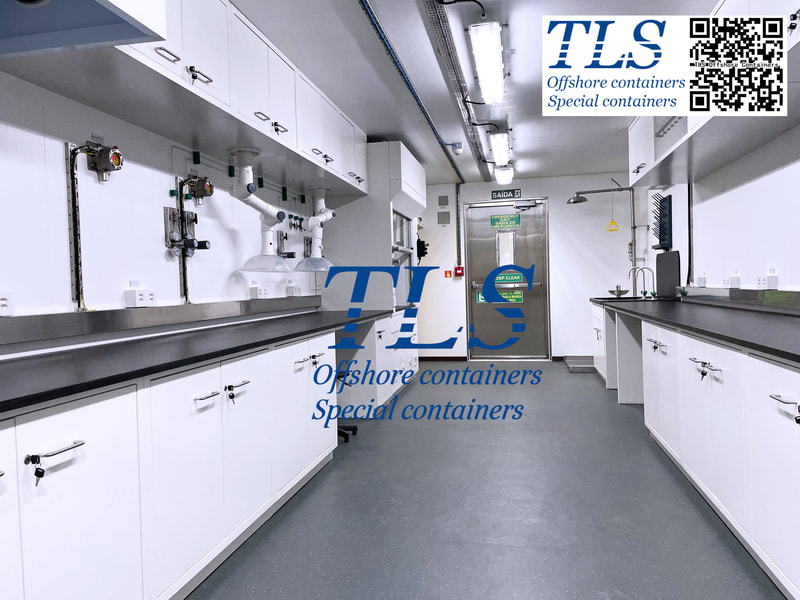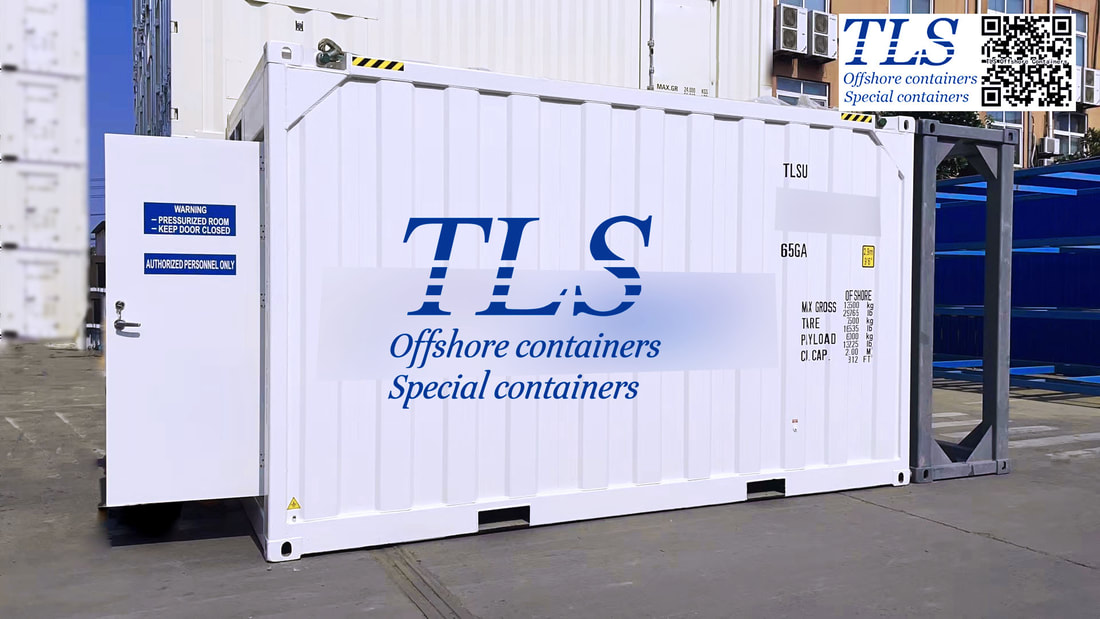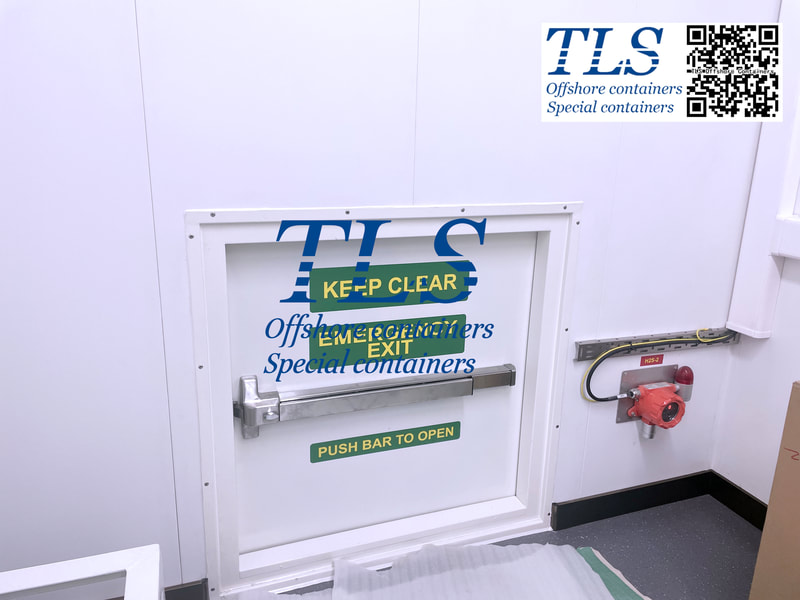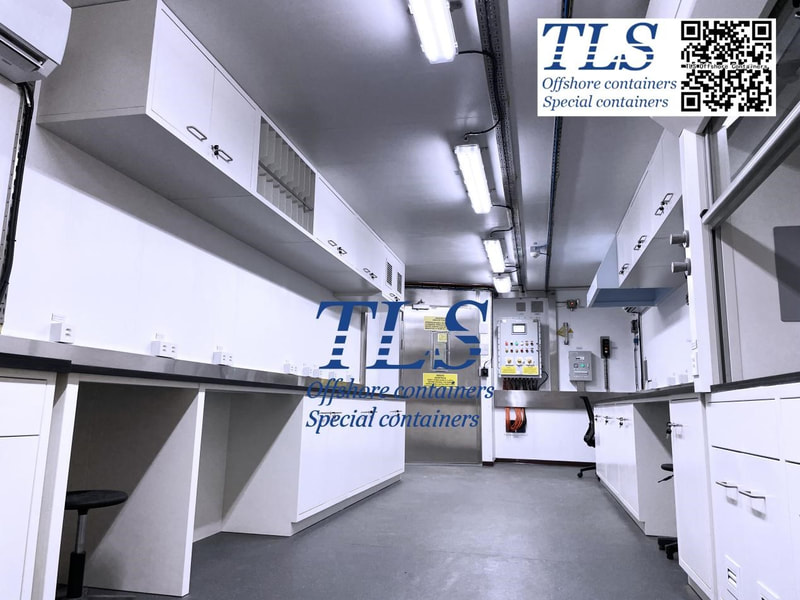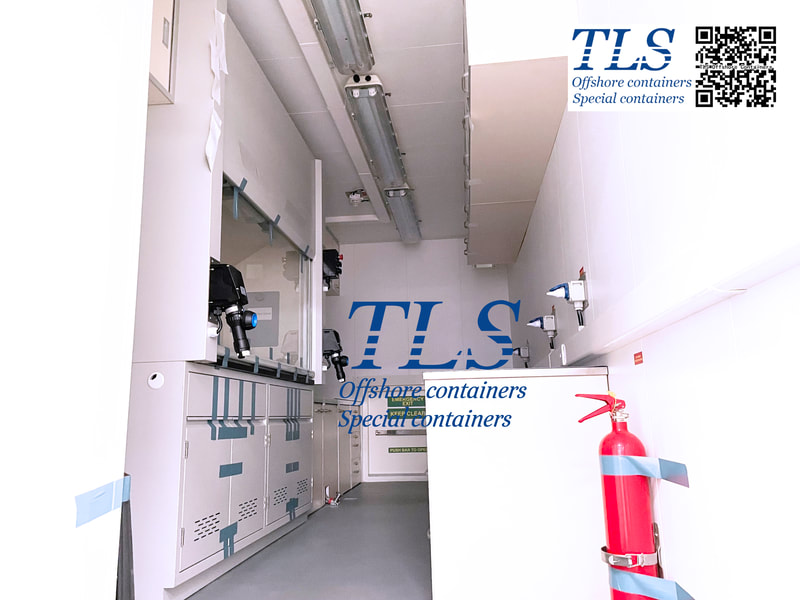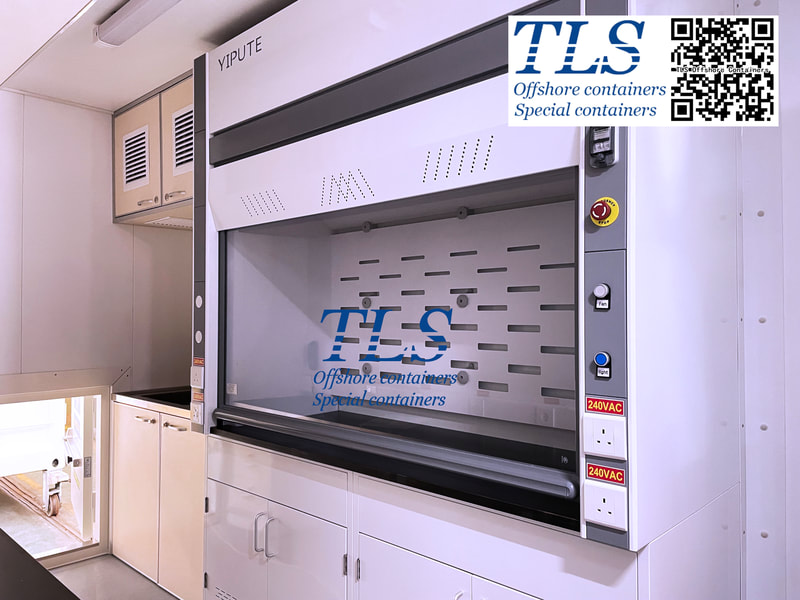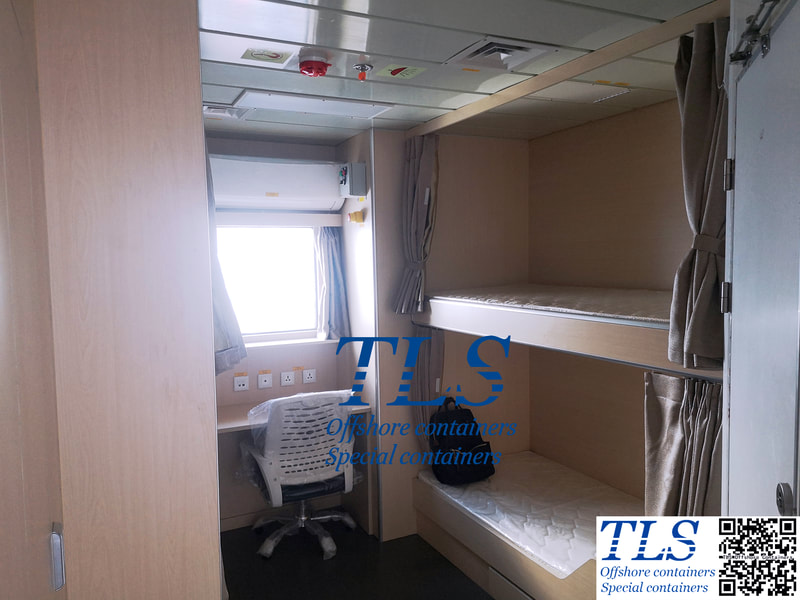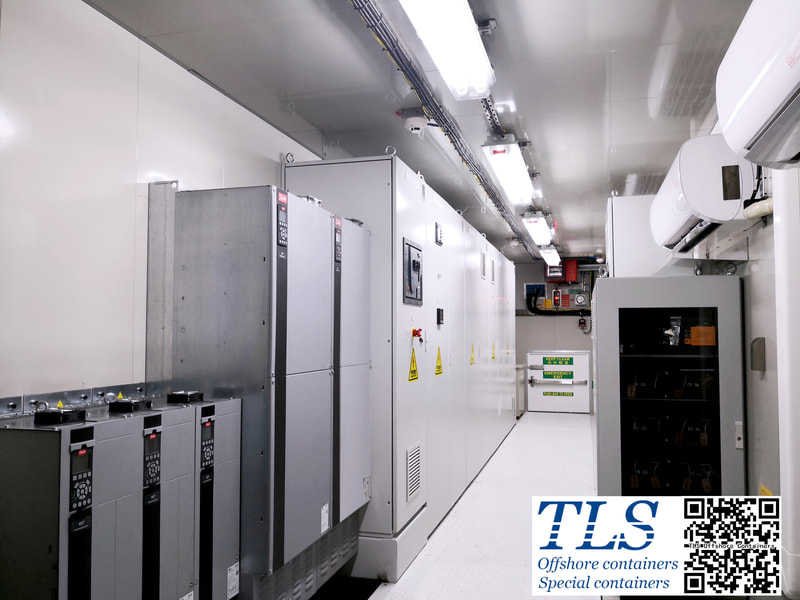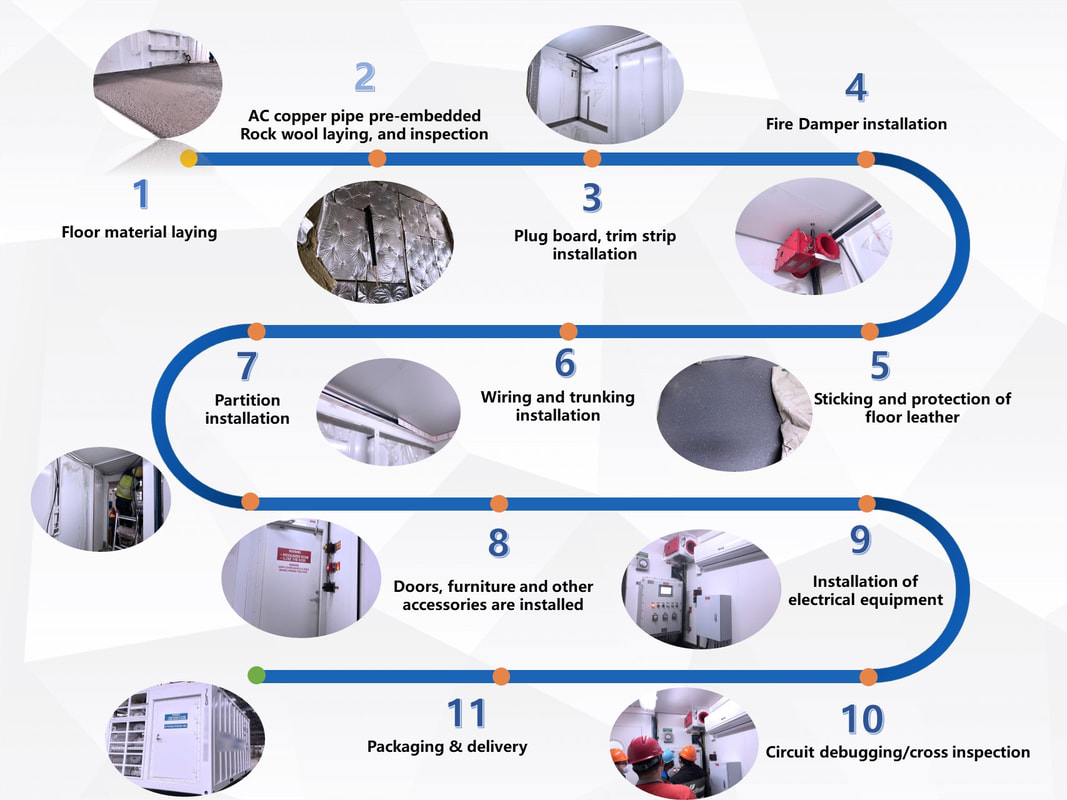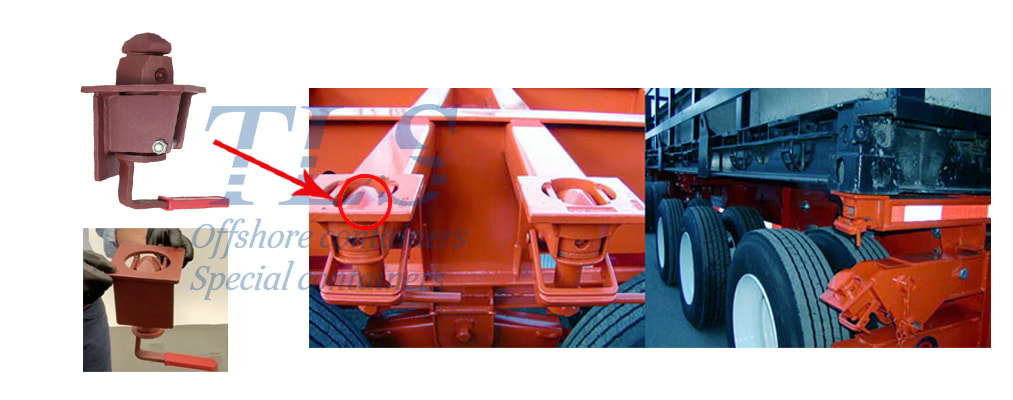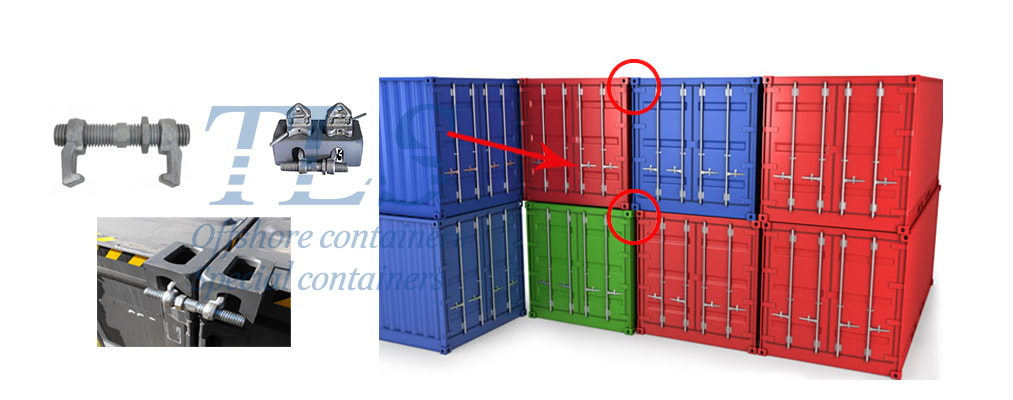|
In various industries, the transportation and storage of hazardous materials and flammable substances demand specialized containers that can guarantee safety. These containers, known as explosion-proof containers, play a vital role in minimizing the risks associated with the handling of dangerous goods. What Are Explosion-Proof Containers? Explosion-proof containers are specially designed for the transportation and storage of hazardous materials. They incorporate a range of unique design and engineering features aimed at reducing the risk of fires and explosions, thereby safeguarding individuals and the environment. Key Features of Explosion-Proof Containers Material Selection: Explosion-proof containers are typically constructed from materials that exhibit excellent resistance to corrosion and fire, helping them withstand chemical corrosion and heat sources. Structural Design: These containers have reinforced structural designs to withstand external pressure and reduce the spread of fires, ensuring their integrity in case of unforeseen incidents. Ventilation Systems: They are equipped with internal ventilation and ventilation systems to rapidly eliminate hazardous gases, thereby lowering the risk of explosions. Explosion Suppression Systems: Some explosion-proof containers come with explosion suppression systems, including explosion firefighting equipment and gas detectors, to control explosive events. Electrical Systems: Electrical systems need to adhere to explosion-proof standards to prevent electrical sparks from igniting fires or explosions. Sealing Performance: Effective sealing performance is crucial to prevent liquid or gas leaks and the spread of fires. Marking and Signage: Proper labeling and signage are essential for identifying the container's purpose, hazardous material classification, and other critical information. International and Domestic Regulations Designing and using explosion-proof containers necessitates compliance with relevant international and domestic regulations. These regulations cover various aspects of hazardous material transportation and storage, including container design, manufacturing, labeling, and transportation. Compliance is critical to ensuring that explosion-proof containers fulfill their role in the safe handling of hazardous materials. TLS can provide pressure containers, laboratory containers, mud logging, negative pressure laboratories, etc., that meet explosion-proof and A60 fire-proof requirements and can be used in ZONE1 and ZONE2 areas. For any inquiries, please feel free to contact us at any time. In the realm of global logistics and cargo transportation, containers play an indispensable role. They are essential tools for moving goods from one location to another. However, different types of containers are suitable for different types of cargo and transportation needs. This article will explore the distinctions between side-opening containers and standard containers, as well as their respective advantages and application areas. Side-opening containers stand out due to their unique side panel design. Unlike standard containers, side-opening containers are equipped with full-length side doors, providing unprecedented flexibility in accessing and loading/unloading cargo. Whether dealing with oversized cargo or irregularly shaped items, side-opening containers excel. This design feature not only enhances accessibility but also ensures the structural integrity and security of cargo during transportation, effectively shielding it from external elements and potential theft. In contrast, standard containers find wide application across various cargo transportation scenarios. They feature sturdy structures and end-door designs, making them suitable for packaged goods, dry bulk materials, and equipment. Standard containers excel in safeguarding cargo, ensuring its safety throughout the transportation process. They are typically used for transporting consumer goods, electronics, furniture, and other items that can be easily loaded through end doors. So, what are the primary differences between side-opening containers and standard containers? Firstly, side-opening containers have side panels consisting of full-length doors, allowing cargo to be conveniently loaded and unloaded from the side. This is particularly crucial for large machinery, vehicles, building materials, and other items that require lateral access for efficient handling. This convenience makes side-opening containers highly popular in industries such as construction, automotive, and heavy equipment manufacturing. In contrast, standard containers feature end doors, limiting cargo access to these doors. This can pose challenges when dealing with large or irregularly shaped cargo. Nevertheless, standard containers excel in cargo protection and are suitable for various types of goods. Another significant distinction is that side-opening containers typically have a thinner structure compared to standard containers, which may make them slightly less robust. This implies that standard containers are more suitable for cases involving exceptionally heavy cargo or the need for multi-tier stacking. However, side-opening containers still possess adequate structural strength to meet most transportation requirements. Lastly, cost is also a factor to consider. Due to their unique design and greater accessibility, side-opening containers are generally more expensive than standard containers. Therefore, when choosing the appropriate container type, logistics professionals must strike a balance between cargo characteristics, transportation requirements, and budget constraints. In conclusion, side-opening containers and standard containers each have their own set of advantages and limitations. Side-opening containers offer greater accessibility and convenience, making them suitable for specialized scenarios requiring lateral cargo access. Standard containers, on the other hand, provide stronger structural protection and are suitable for a wide range of cargo types. TLS Offshore Containers / TLS Special Containers is a global supplier of standard and customised containerised solutions.
Wherever you are in the world TLS can help you, please contact us. In the dynamic realm of global trade, shipping containers have risen to prominence as a primary means of transporting goods across borders. However, as consumer demands for personalized products surge, the spotlight has shifted to customized containers. This article aims to delve into the delicate equilibrium between customized containers and standardized sizes, and how companies can address customer preferences while upholding efficient shipping practices and cost-effectiveness.
The surge in demand for customized containers underscores the evolving landscape of consumer expectations. As markets diversify, an increasing number of clients seek containers that reflect the unique essence of their products, encapsulating brand identity and distinctiveness. Consequently, this paradigm shift introduces bespoke requirements for dimensions, configurations, materials, and other aspects of container design. However, it's worth noting that the pursuit of tailor-made sizes can introduce a spectrum of challenges, particularly when it comes to the logistics of cargo transportation. Amid this backdrop, the established standard sizes of containers—such as the ubiquitous 20-foot (20ft) and 40-foot (40ft) variants—offer an array of benefits. These standardized dimensions seamlessly integrate into the global logistics framework, spanning from seafaring vessels and bustling ports to the intricacies of transport and warehousing. This harmonious alignment equates to heightened operational efficiency, cost savings, and a reduction in operational intricacies. Yet, the call for customized containers reverberates. Achieving equilibrium between catering to bespoke demands and safeguarding transport efficiency necessitates deliberate consideration. One strategy that has gained traction involves augmenting non-standard containers with steel frameworks, transforming them into standard dimensions. This proactive approach ensures that non-standard containers are conformed into standard sizes ahead of the transportation phase. By doing so, transportation costs are curtailed, and the complexity of operations is diminished. Additionally, these interlinking frameworks confer augmented cargo protection and stability, a paramount consideration to ensure goods remain intact throughout transit. As enterprises navigate decisions in this domain, an array of factors must be pondered. The metamorphosis of non-standard containers into standard sizes could entail supplementary expenses encompassing design and fabrication, alongside adherence to exacting technical and engineering criteria. Therefore, the delicate balance between personalized requirements and transport efficiency mandates a comprehensive evaluation of factors like expenditure, cargo attributes, and logistical requisites. Harmonizing the pursuit of individualized demands with optimal transport practices is no small feat. However, through a panoramic assessment of an array of considerations, it's possible to satiate customer yearnings for uniqueness while ensuring that the transportation of goods embodies efficiency, predictability, and security. Embracing the evolving trend of customized containers, TLS Offshore Containers stands as a testament to this transformative ethos. By tailoring their offerings to match client needs, they embody the spirit of innovation while diligently striving to optimize costs. In a world where personalization reigns, the voyage towards equilibrium between customization and efficiency becomes a voyage laden with possibility and promise. What are the video inspections of explosion-proof pressure containers, which are usually checked?7/20/2023
During the video inspection of explosion-proof pressure containers, several critical aspects are thoroughly examined to ensure their safety and compliance with regulations. The inspection process includes the following key areas:
Check the functions of all modes, and the functional tests of all modes will be carried out one by one according to the regulations on the FAT file. Automatic mode: normal use in hazardous areas Bypass mode: can only be used in safe area Manual mode: for emergency use only In "bypass mode" and "manual mode", the explosion-proof fan can be started manually only when the air inlet and outlet valves are fully opened; when the air valve is not fully opened, the manual switch of the explosion-proof fan is invalid. TLS pays attention to every detail of the product, please feel free to contact us for any needs Specialized shipping containers play an increasingly crucial role in today's industrial and transportation sectors. However, when it comes to specific environments or applications, fire safety becomes a paramount consideration. In this regard, A60 standard containers have emerged as a noteworthy choice. When do specialized shipping containers need to meet the A60 standard? Specialized shipping containers need to meet the A60 standard in the following situations: a) Offshore or Marine Platform Modules: Offshore oil production platforms, offshore wind farm platforms, and similar offshore or marine platform modules require high fire-resistant performance to ensure the safety of personnel and equipment. b) Shipboard Containers: According to the regulations of the International Maritime Organization (IMO), shipboard containers must comply with the A60 fire-resistant standard to provide fire protection and ensure the safety of cargo and personnel on board. c) Laboratory Containers: Laboratory containers used for scientific experiments, research, or analytical work require A60 fire-resistant standard compliance. The floors, walls, and ceilings of laboratory containers must meet the A60 fire-resistant standard to safeguard the laboratory environment. d) Medical Facility Containers: Mobile clinics, emergency stations, and similar medical facility containers need to meet the A60 fire-resistant standard to ensure the safety of medical equipment and patients. Key Conditions for A60 Standard Containers: To meet the A60 standard, containers must fulfill the following critical conditions: a) Fire-Resistant Materials: Use fire-resistant materials in the construction of container structures, such as flame-retardant steel plates, to provide high fire-resistant performance. b) Fire-Resistant Insulation Layer: Add fire-resistant insulation layers, such as fire-resistant mineral wool boards or fire-resistant gypsum boards, to the walls, ceilings, and floors inside the container. These layers enhance the resistance to flame propagation. c) Sealing: Ensure the structural integrity of the container to prevent the ingress or diffusion of flames and smoke through cracks or joints. d) Fire-Resistant Doors and Windows: Install fire-resistant doors and windows at the openings of the container, utilizing fire-resistant glass and door leaves that can withstand fire erosion, thereby preventing the spread of fire. e) Fire Safety Facilities: Equip the container's interior with appropriate fire safety facilities, including fire alarm systems, fire extinguishers, sprinkler systems, etc., to enable timely fire control and suppression. Specialized shipping containers need to meet the A60 fire-resistant standard in specific environments and applications. By employing fire-resistant materials, fire-resistant insulation layers, ensuring sealing, incorporating fire-resistant doors and windows, and installing fire safety facilities, A60 standard containers can provide high fire protection performance, ensuring the safety of personnel and equipment. When designing and selecting specialized shipping containers, adherence to applicable regulations and standards is crucial to meet fire safety requirements, protect the environment, and ensure safety throughout the transportation process. With development, more and more offices, laboratories, equipment storage rooms, and residences have begun to adopt containerized modular solutions. The convenience and mobility of containers, while being environmentally friendly, practicality and cost-effectiveness are one of the reasons why people's demand for this part has surged. If you need to customize a container module suitable for your company or yourself, what aspects of your requirements do you need to clarify first?
Functional Requirements: Determine the features you need for your office container | lab container |MCC shelter |reefer container. For example, what you need is an office space, conference room, kitchen, laboratory or other. Corresponding functional and space requirements can be listed. Dimensions and layout: Determine the size and layout of the office container, according to your budget and the constraints of the use of the site. Consider your team size and workflow to determine the appropriate container size and interior layout. Equipment and facilities: Determine the equipment and facilities you wish to house in your office container. This may include electricity supply, lighting systems, air conditioning, heating, internet connection, etc. Provide an approximate equipment list and specification requirements. Environmental requirements: Consider the climatic conditions and environmental requirements in your area. If you will be using office containers in harsh environmental conditions, such as hot, cold or humid areas, you will need to specify appropriate insulation, thermal and moisture protection measures. Certification standards: According to your use needs and special requirements, specify the certification standards that need to be met, such as DNV 2.7-1, EN 12079, IEC 60079-13, etc. Make sure the container manufacturer understands your certification needs. Budget and delivery time: Know your budget constraints and required delivery time. In this way, container manufacturers can provide corresponding design and construction solutions according to your requirements. TLS can be customized according to your requirements. The equipment in the container can be supplied by customers or purchased by us according to your needs. Everything is just to provide you with a perfect container module solution. For any requirements, please feel free to contact us. Specialized containers are the backbone of various industries, ensuring the safe and efficient transportation and storage of specialized goods. The manufacturing process of these containers involves two essential stages: external framework assembly and interior decoration and testing. In this blog, we will take a closer look at the step-by-step process behind creating these exceptional containers.
www.tls-containers.com/TLS offshore containers specialize in providing customized solutions and comply with strict offshore standards in our production process
If you want to know more details, please feel free to contact us. E-mail: [email protected] Hotline: +65-65637288; +65-31386967 The explosion-proof air conditioner generally adopts the composite explosion-proof method. On the basis of the ordinary air conditioner, the special explosion-proof fan and the explosion-proof compression molding machine are replaced, and then the D-type explosion-proof method is adopted for the electronic components of the internal and external machines. The components are placed in an external explosion-proof box and sealed, so as to achieve explosion-proof, anti-corrosion, dust-proof, and ensure safety to a certain extent. At the same time, this honeycomb structure has high surface efficiency per unit volume, so it has excellent thermal conductivity, and can quickly absorb most of the heat released by combustion, so that the final temperature Tf after the combustion reaction is greatly reduced. The expansion degree of the reaction gas is greatly reduced, and the pressure value of the container is not increased much. Application: 1. In flammable and explosive environments such as petroleum, chemical industry, military industry, medicine, storage, etc., type IIA and IIB explosion-proof air conditioners can be used; 2. In the environment of flammable and explosive gas such as hydrogen and acetylene, IIC type explosion-proof air conditioner can be used; 3. Some special explosion-proof air conditioners must also be used in other special environments such as minerals. Explosion-proof air conditioners are divided into high temperature type, low temperature type, ultra-high temperature type and ultra-low temperature type according to the working environment; TLS provides customized containerization solutions around the world, any requirements for special containers such as positive pressure containers| negative pressure containers| modular containers| accommodation containers|office containers|lab containers|workshop containers|battery energy storage containers|BESS|reefer containers| sewage treatment containers, etc. Please contact us. There are many ways to secure containers on the ground/deck, or to stably stack containers together. Each method requires different types of twist lock. Here are some common ways for your reference: 1. Vertical Locks (Stacked on top of each other) a. Shipping Container Twist Lock & Base It is used to stack containers vertically. Dovetail twist locks are suitable for flat surfaces and can be welded to the base or bolted to a metal surface. To use this lock, simply place the lock in place, load the container on top, move the handle from left to right, and it's secured. b. Shipping Container Manual Twist Lock It is used to hold two containers stacked vertically. In this lock there is a left-to-right lock, to fix two containers, just move the handle to the neutral position, load the container on the upper part, and then move the handle to the locked position. c. Shipping Container Semi-automatic twist lock It is used to hold two containers stacked vertically. It's similar to a manual twist lock, except that instead of a handle, the lock is spring-loaded. The advantage is that the spring stops when the lock is accidentally unlocked. When using it, simply pull the spring into the neutral position and insert the upper container. d. Shipping Container Manual Twist Lock Weld Type for Chassis It is generally welded to the container chassis trailer. When unlocked, the lock head is stuck inside. After loading the container, twist the handle to lock 2. Horizontal Locks a. Horizontal Container Twist Lock/Connector It is used to connect containers side by side. They cannot be connected vertically, only on the sides. Insert the latch into the side of the container and twist the latch. Attach the second container to it and lock it. b. Bridge Fittings Clamp When shipping containers, especially on barges, it is easier to prevent them from tipping or falling if they are tied together. Fortunately, steel bridge fittings can do the job. These heavy-duty fittings hold containers together, combine their weight and make them harder to move, spill or dump in transit. TLS Offshore Containers / TLS Special Containers is a global supplier of standard and customised containerised solutions. Wherever you are in the world TLS can help you, please contact us. E-mail: [email protected] Hotline: +65-65637288; +65-31386967 Key words: #Dry Containers #Reefer Container #Refrigerated Container #Positive Pressure Container #Negative Pressure Container #Energy Storage System (#ESS) #Lab Container|Workshop Container #Accommodation Container #Temporary shelter #Temporary #refuge shelter ( #TR) #Sewage Treatment Container |
Archives
July 2024
Categories
All
|
- Home
-
Containerised solutions
- Intelligent pressurised container | MUD logging cabin
- Battery energy storage system (BESS) container
- Flexible grid tied battery storage system
- Laboratory container | workshop container | Equipment containers
- Temporary refuge shelter | Toxic gas refuge | Safe haven
- Offshore accommodation cabin | office container
- Reefer container | Refrigerated container
- Intelligent waste water treatment container
- Fresh water generator container
- Cargo Containers
- Product photos & videos
- News & Blogs
- Contact us
|
Featured products
Intelligent pressurised container Temporary refuge (TR) shelter, toxic gas refuge (TGR) Battery energy storage system (BESS) container Containerised waste water treatment plant Fresh water generator container Reefer container Laboratory container, Workshop container Accommodation container Offshore closed container |
All Rights Reserved 2020 © TLS Offshore Containers / TLS Energy
|


